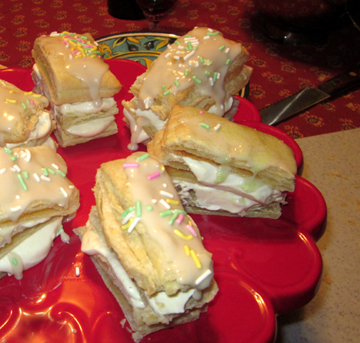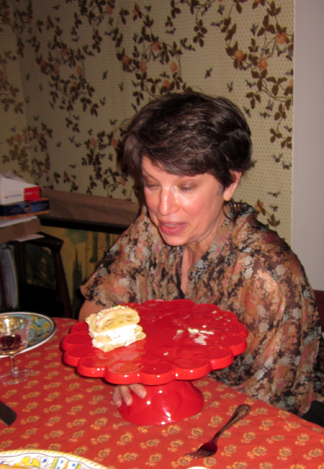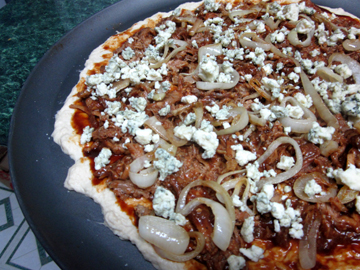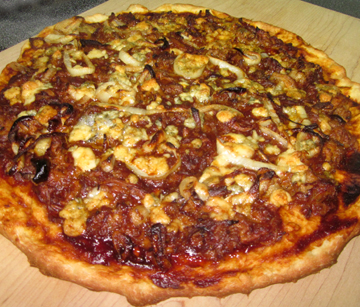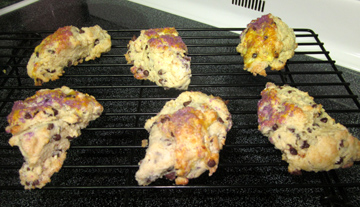
If I had to pick one series to represent American network television in the 1990s, it would probably be Seinfeld.
I personally only watched two episodes of this comedy program during its network run. Nevertheless, I was aware from dinner-table conversations in communities with populations that ranged from the hundreds to the millions that the show revolved in quasi-autobiographical fashion around the stand-up comedy of an upper-west-side New Yorker, Jerry Seinfeld, and his onscreen friends: explosive ex-girlfriend Elaine, neurotic best friend George, and so-weird-he-might-have-been-from-Mars neighbor Kramer.
The program debuted slowly, starting with the pilot’s airing as filler in the summer of 1989. It grew in time to enchant critics and then millions of viewers before it went off the air with great brouhaha in 1998.
In Seinfeld: The Totally Unauthorized Tribute (not that there’s anything wrong with that), David Wild of Rolling Stone enthuses, “’Seinfeld’ is one of those rare redeemers of popular culture; like Sinatra, pasta or the Beatles, ‘Seinfeld’ shows that sometimes the masses get things exactly right.”
Episodes became instant classics among baby boomers, rapidly gaining the sort of status previously enjoyed only by favorite segments of I Love Lucy and The Honeymooners.
I heard immediately after they aired, for example, about the controversial subject matter of “The Contest” (an episode, for anyone who missed the discussion, in which the principal characters compete to discover who can refrain the longest from masturbation) and the biting culinary humor of “The Soup Nazi.”
Naturally, the latter, which aired in November 1995, speaks to me. Like many episodes of Seinfeld, “The Soup Nazi” contradicts the popular conception that nothing happens in this series. In fact, Seinfeld is very much of its era in that it often features multiple, intersecting plots.
In this episode, one subplot revolves around the Nazi of the title and his soup emporium. Another involves George’s attempts to persuade Jerry to desist from displays of affection with his latest girlfriend. The last features the efforts of Elaine to acquire an armoire for her apartment.
Perhaps the program’s “nothing” reputation stems from the fact that plot in Seinfeld is less important than the absurd conversations of its characters. Perhaps it stems from this situation comedy’s tendency, inherited from the stand-up comedy form of its star, to jump from one plot point to another in non-sequitur fashion, making the trajectory of the plot(s) hard to trace. In any case, the narrative soup here is quite deliciously thick.
The main plot of “The Soup Nazi” features the efforts of the program’s principal characters to place successful orders with the fierce owner of a small take-out establishment that sells ambrosial soup. Jerry tells George and Elaine, “You can’t eat this soup standing up. Your knees buckle.”
Unfortunately, he warns them, the highly temperamental chef, “secretly referred to as ‘the Soup Nazi,’” does not allow customers to deviate from his strict ordering procedure.
As most fans know, the character of the Soup Nazi was based on a real New York chef notorious for his delectable soup but less than delectable kettle-side manner.
As it does in the program, the line of potential customers regularly extends around the block from Al Yeganeh’s soup store. In fact, my sister-in-law lived two blocks from this establishment, the Soup Kitchen International, for years and never tried Yeganeh’s soup because she never had time to wait in the line!
Yeganeh apparently detested the Seinfeld tribute (if that’s the right word) to his reputation.
He told People in 1998, “The show really destroyed my personal life and my emotional and physical well-being. Because of this TV show, customers think I’m going to kill them and they panic. But the line must be kept moving!”
Typically, the “Soup Nazi” episode uses Yeganeh’s alter-ego more to shed light on the personalities of the regular cast members than to make any statement about the vagaries of New York restaurateurs.
Jerry, the only character with a successful career, masters the tense ritual of ordering from the Soup Nazi quickly and emerges victorious from the store with a bowl of crab bisque.
George is less fortunate. His bleating requests for bread to accompany his soup force the Nazi first to raise the price of George’s lunch and then to utter the dreaded words “No soup for you.”
Elaine, ever the free spirit, appears to view the establishment’s stringent rules as a challenge. She dawdles over her order so obnoxiously that the Soup Nazi banishes her from his kitchen for a full year—and I for one don’t blame him.
Interestingly, Kramer, who generally seems to operate on a different plane from the other characters, is the only person in the group to whom the Soup Nazi warms up—mostly because Kramer is just weird enough to understand the Nazi’s attitude toward the ordering process.
He views the chef’s desire for “perfection” in his customers as a natural extension of his quest for perfection in his cooking. “You suffer for your soup,” Kramer says sympathetically. Clearly, Kramer’s heart as well as his taste buds will suffer at the episode’s end, when the Soup Nazi announces that in light of Elaine’s threats to reveal his recipes to the world he plans to decamp for Argentina.
Over the course of the episode, the viewer is introduced to a number of soups on the Nazi’s menu, including turkey chili, jambalaya, gazpacho, cold cucumber, corn and crab chowder, and wild mushroom. I have chosen to make mulligatawny, the favorite flavor of Kramer, who calls the Soup Nazi “one of the great artisans of the modern era.”

Soup Nazi Mulligatawny
Make sure your spices are fresh and pungent for this soup. I recommend curry powder and cumin seeds from Kalustyan’s (or Foods of India in New York, two stores at which the Soup Nazi might well have shopped.
If you want a vegetarian mulligatawny, feel free to omit the chicken and to substitute vegetable stock for the chicken stock. You’ll still have a lovely, warming concoction.
Ingredients:
2 tablespoons olive oil
1 large onion, chopped
2 cloves garlic, minced
2 carrots, cut in small pieces
2 tablespoons cumin seeds, mashed in a mortar and pestle just enough to release flavors
1-1/2 tablespoons curry powder (or more you love curry)
1 cup lentils, washed and drained
6 cups chicken stock
1-1/2 teaspoons salt
1 tablespoon lemon juice
1 tomato, cut up
1-1/2 cups cooked chicken, shredded
cooked rice to taste (optional)
cream to taste (optional)
fresh, chopped coriander (optional)
Instructions:
Heat the oil in a large soup pot, and sauté the onion, garlic, and carrot until the onion turns a light golden color. Stir in the cumin and curry powder and heat for a minute as a paste, adding a bit of the chicken stock if it threatens to dry out completely. Quickly stir in the lentils; then add the stock, salt, lemon juice, and tomato.
Bring the mixture to a boil, reduce the heat, and simmer covered for half an hour, stirring occasionally. Add the chicken, and simmer for another half hour partly covered, stirring frequently.
Cool the mixture for at least a half hour, and then puree it in batches in a blender or food processor. Refrigerate the soup for several hours (overnight if possible) to let the flavors meld. Then heat the mixture in a large saucepan until warm, stirring constantly to keep the thick soup from sticking to the bottom of the pan.
Your soup may be served plain or with cooked rice. Some people prefer to add a bit of cream to their bowls, and many like a hint of coriander sprinkled over each bowl just before serving. Serves 6 to 8.
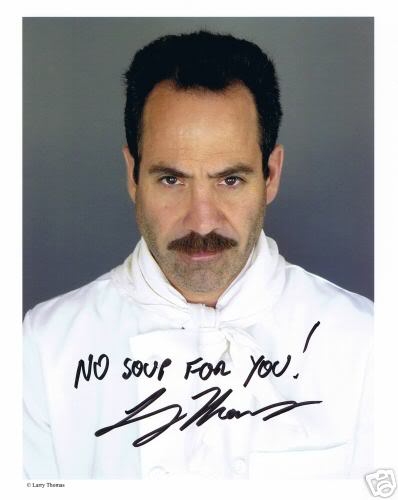
Larry Thomas, who portrayed the Soup Nazi, still sells personally signed "No Soup for You" photos on eBay.
If you enjoyed this post, please consider taking out an email subscription to my blog. Just click on the link below!
Subscribe to In Our Grandmothers’ Kitchens by Email.
